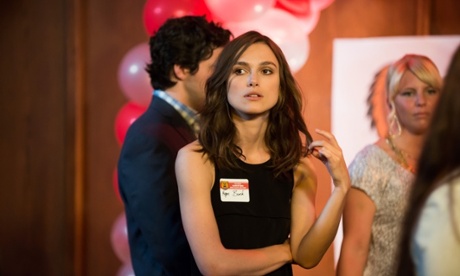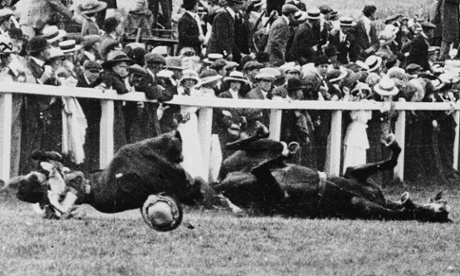When it comes to tackling gender equality, Hollywood always seems to drag its feet. With depressing frequency, stories and statistics emerge that make Hollywood seem an inhospitable place for women, from stars such as Jennifer Lawrence speaking out about the pay gap, to the numbers that tell us women directed only 6% of Hollywood films in 2013 and 2014. Strange, then, that the film industry wasn’t always this way. In fact, there were more women working in Hollywood in its first two decades than there are now, or have been at any time since. If Hollywood is ever to achieve gender parity in its studios and boardrooms, it should look back to its beginnings.
Women were in the movie game from the very start. The first woman to direct a film was almost certainly Alice Guy-Blaché, who worked for Gaumont in Paris. She began to make films in 1896, and that same year she directed La Fée aux Choux (The Cabbage Fairy), which might be the first fiction film ever made. She had a successful career at Gaumont, which included directing La Vie du Christ in 1906, a lavish 30-minute biblical story involving 25 sets and hundreds of extras. She moved to the US, where she founded her own production company, Solax, and continued to make films into the 1920s, when she returned to France to write and lecture on film. You can find out more about Guy-Blaché on the Women Film Pioneers website and in a forthcoming documentary, funded by Kickstarter.
There are many more stories on the Women Film Pioneers site (a valuable and growing resource) that challenge the received idea of movie directing as a man’s job. Other celebrated female directors of the silent era include Lois Weber, who started out working for Guy-Blaché (the older director recalled that Weber “watched me direct … and doubtless thought it not difficult”) and became a rival to DW Griffith in the teens and early 1920s; Lotte Reiniger, a German artist whose distinctive “silhouette” movies helped pioneer the art of animation; and Dorothy Arzner, who rose from studio typist to director and made distinguished films into the 1940s. There was also Alla Nazimova, Dorothy Davenport Reid, Zora Neale Hurston, Cleo Madison, Mabel Normand, Nell Shipman, Marion E Wong and many more. Between 1912 and 1919, Universal had 11 female directors on its books who between them made more than 170 films.
In 1915, the Motion Picture Supplement published an article headlined “Women’s conquest in filmdom”, which said: “One may not name a single vocation in either the artistic or business side of its progress in which women are not conspicuously engaged. In the theatres, in the studios and even in the exchanges where film productions are marketed and released to exhibitors, the fair sex is represented as in no other calling.”
Women produced, wrote and edited films in vast numbers. Stars who presented themselves on screen as ringletted sweethearts or carefree flappers were often doing business deals and running movie sets in reality. Mary Pickford is the best example. She started her own company in 1916, and from that point on she produced all her own films, only rejecting the job of directing because she had so many other responsibilities on set (“I must be responsible for the entire production. So many things can ruin fine work”). Pickford went further in 1919 when she was instrumental in founding the United Artists studio, and in running it thereafter. Other female actors set up their own production companies to protect their finances and their image – from Clara Kimball Young to Norma Talmadge. They insisted on making only the films that they wanted to, and ensuring that they were properly rewarded for them.
Film historian Anthony Slide has rediscovered an early feminist film company, too. Entirely financed by women, the American Woman Film Company was founded in 1916 to “to produce motion pictures of the highest moral and artistic tone” – but its plans were thwarted after a road accident brought its first production to a halt. Twenty-four members of cast and crew, including the male director J Farrell Macdonald, were hurt in the biggest accident in film history to that point.
In the silent era, distinctions between jobs were often blurrier than they are today. Producing or editing merged into directing; screenwriting continued into producing. It was a hangover from the very earliest days of film production, when small crews pitched in together, with the leading actor of the film also doing the studio accounts or stitching costumes. As Hollywood hardened into the formal structures of the studio system, and film-making became a much more lucrative industry, those distinctions made themselves felt, and the biggest prestige on set was reserved for the director, the person literally calling the shots. By the coming of sound in 1927, Lois Weber’s advice to young women considering a career as a director was starkly prescient. “Don’t try it,” she said. “You’ll never get away with it.” From that point on, the studio she worked for, Universal, which had hired so many women in the teens, would not credit a single female director until 1982, when Amy Heckerling made Fast Times at Ridgemont High.
If you are interested in reading more about the female history of the silent film industry, the Women Film Pioneers site and the Women and the Silent Screen dossier are great places to start. There are several books devoted to the topic, the latest being a volume edited by Melody Bridges and Cheryl Robson called Silent Women: Pioneers of Cinema. But there is much more to uncover – and by expanding on all these stories, we reverse the mindset that certain positions are reserved for men.











